The need for reliable and faster networking systems continues to increase with both businesses and technology drivers seeking to achieve maximum performance. With this comes new technology like 10 Gigabit Ethernet (10 GbE), which dramatically shifts the boundaries of connectivity as we know it. Enabling organizations to perform data-heavy workloads, manage bandwidth-intensive applications, and build future-ready networks is the 10 Gb network switch, which, along with other pivot components, allows for this transformative shift. This guide aims to discuss everything concerning the 10 Gb network switches, including their features, practical uses, and benefits. Be it upgrading an enterprise-level infrastructure, improving a personal lab setup, or simply having an interest in the possibilities offered by 10 GbE, this article will provide the necessary insights to help make decisions and fully utilize the high-speed networking possibilities.
What is a 10Gbe Switch and How Does It Work?
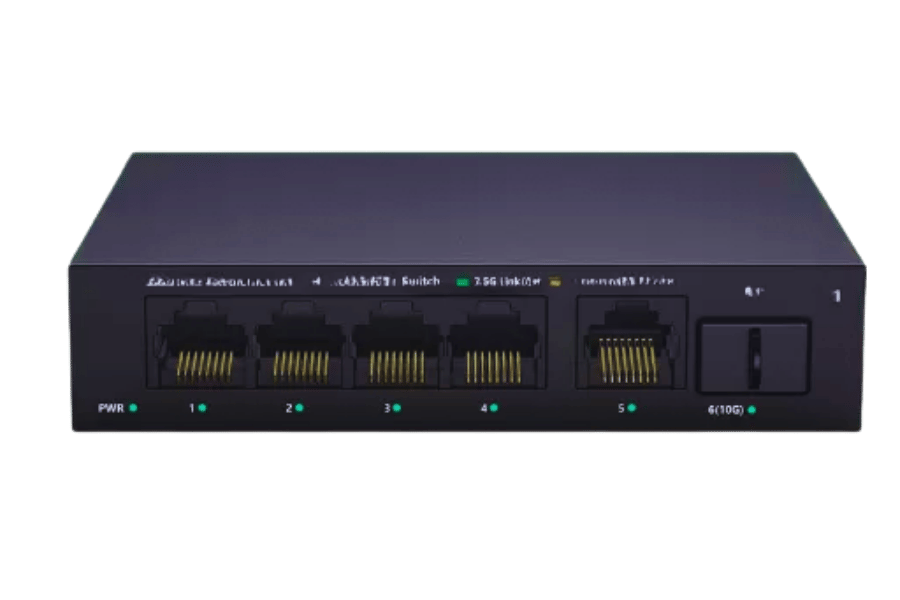
A 10GbE switch is a networking device that enables the interconnection of various endpoint devices within a local area network (LAN) and facilitates data exchange at a maximum speed of 10 gigabits per second. It functions by managing the flow of data packets to all the devices involved to achieve optimal communication, so data transfer occurs without delays. Typically, these switches are fitted with more than one 10GbE port, enabling different types of connections to be made using copper or even fiber optic cables, depending on the network needs. Through advanced switching technology, a 10GbE switch will help reduce device latency, control the flow of data, and optimize performance. This makes the switch very suitable for applications that consume a lot of bandwidth, such as data centers, video streaming, and transfers of huge files.
Understanding the Basics of 10 Gb Ethernet
10 Gb Ethernet’s data transmission capabilities are significantly faster than those of traditional standards, gratifying even the highest demand environments. It also seamlessly supports scalability, allowing additional workload to be placed on the network without compromising the quality of service. The technology reduces latency, enhances throughput, and provides dependable, high-speed connections. It is due to these reasons that 10 Gb Ethernet has become indispensable to modern networks, especially with advanced technologies like cloud computing, big data analytics, and powerful storage subsystems within enterprises.
The Role of 10 Gb Switch in Modern Networks
The significance of the 10 Gb switch in optimizing a business’s and a data center’s network performance, especially concerning the handling of high bandwidth applications, cannot be overemphasized. These types of switches are capable of delivering a high data transfer rate of 10 Gbps per port, providing connections which are low latency and with minimal packet loss, even when the network is severely congested. Their high port density provides connectivity to a multitude of devices, which is necessary for advanced network topologies.
The most recent developments in 10 Gb switch technology have tackled modern issues, especially the demands posed by virtualization and cloud computing. The integration of virtual machines and containerized applications into enterprise systems is made easier with 10 Gb switches, as they allow for faster inter-server communication, helping ensure exceptional efficiency in workload processing. Data centers equipped with 10 Gb Ethernet switches, for example, can significantly reduce bottlenecks, enabling the meeting of throughput and speed requirements for applications suchs as video streaming, online gaming, and real-time analytics.
The Ethernet switch market is expected to grow at a staggering compound annual growth rate (CAGR) of 34.5% between the years 2023 and 2030. Such rapid growth is supported by the increased adoption of 10 Gb switches and is fueled by the newer deployments of 10 Gb Ethernet in services like cloud computing, big data, and IoT (Internet of Things) ecosystems. Moreover, the introduction of 10 Gb switches with greater energy-saving capabilities, such as Energy-Efficient Ethernet (EEE), makes 10 Gb switches faster and more environmentally friendly.
10 Gb switches enable better network deployment because they support link aggregation protocols as well as advanced management features with greater control over the traffic utili. As a result, they become critical for companies attempting to fortify the scalability, dependability, and performance of their networks while also considering future developments.
Comparing Gigabit and 10 Gb Technologies
The distinctions between 1 Gigabit Ethernet (1 GbE) and 10 Gigabit Ethernet (10 GbE) become obvious when analyzing speed, bandwidth capability, and modern-day applicability. In a general or office-setting environment, Gigabit Ethernet operates at a speed of 1 Gbps. For enterprises, however, data transfers in the form of video production, data center operations, or cloud computing require more horsepower—in this case, 10 GbE provides up to 10 Gbps, which is 10 times faster than its predecessor.
Along with that, 10 GbE also offers lower latency and higher throughput, which assists in improving the speed of data-sensitive operations, real-time applications, and reducing the delays in operations. Additionally, the increased bandwidth aids in enhanced networking requirements, especially virtualization and storage area networks (SANs), which heavily rely on speed and dependability.
In terms of pricing, 1 GbE is less expensive due to the lack of hardware needed and the lower cost of cables, which makes it easier for smaller organizations to afford it. There is a high demand for 10 GbE, and while the technology earlier had a higher markup, the infrastructure compatible with it has also seen a price decrease. Further innovation, such as fiber-optic cables and more readily available network interface cards (NICs), has also allowed for a more affordable price.
Lastly, consider power efficiency. 10 GbE may be more power-hungry than Gigabit Ethernet on a per-port basis, but adaptations like Energy Efficient Ethernet (EEE) and better transceivers have improved the power impact of 10 GbE devices. Now, modern 10 Gb switches can offer high throughput and still meet power efficiency targets.
In any case, the decision is based on the organization’s particular needs when it comes to selecting between Gigabit and 10 GbE. Companies with high network traffic and those with growth potential down the line might find value in investing in 10 GbE, while lesser network-intensive firms might still reap the benefits from the older Gigabit Ethernet standard.
How Do I Choose the Right 10 Gb Network Switch?
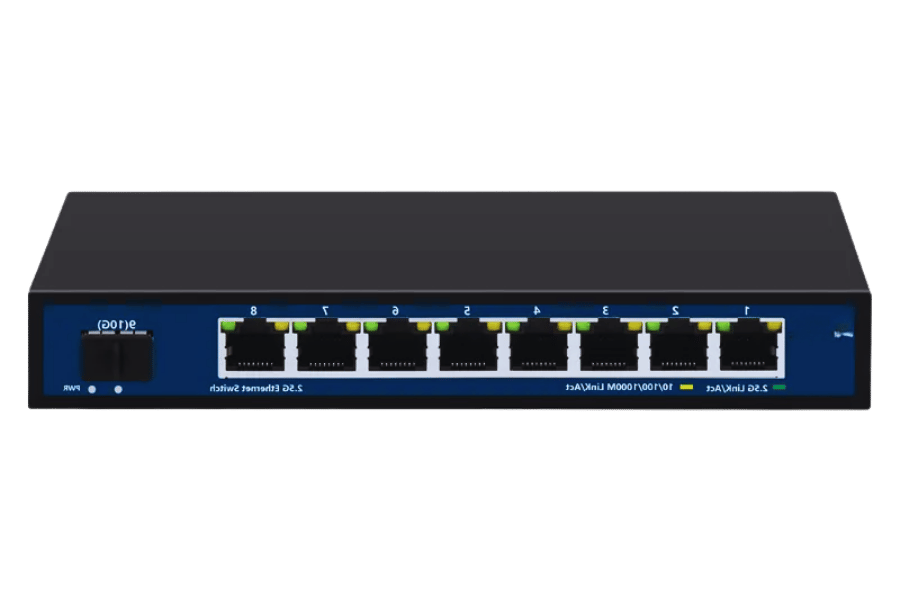
Key Features to Look for in a 10 GbE Switch
Considerations like functionality as it relates to the existing network infrastructure within the organization should be taken into account when choosing a 10 GbE switch. Below are the key points to ponder.
Port Density and Scalability
Assess the current and future projected number of ports. This demand should be balanced for a 10 GbE switches to ensure network growth. For example, the availability of switches with 24, 48, or even more than 48 available 10G ports means that businesss no longer have to continually spend on extra hardware as their needs evolve, and Switches with modular capabilities save enterprise an additional cost.
Layer 2/3 Capability
For larger more segmented networks, Inter-VLAN communications require more advanced routing protocols. So assess whether your application calls for Layer 2 (data link) or Layer 3 (network layer) capabilities. Routing functionality is supported by layer 3 switches owing to their ability to facilitate greater inter-VLAN communications.
Switching Capacity and Latency
Dependable data flow, especially with bandwidth reliant operations such as virtualization or data center activities, require a high switching capacity ensured by the 10 GbE model. Modern enterprise-grade switches actively manage traffic with switching capacities over 1 Tbps and near-zero latency, effortless servicing lag-sensitive applications.
PoE Compatibility
The use of PoE can be revolutionary for networks incorporating IP cameras, VoIP, or Wi-Fi access points. The switch’s compatibility with standards like IEEE 802.3af/at/bt indicates that it may have the ability to power the connected devices directly. This would eliminate the need for separate power adapters, simplifying the system and cutting costs.
Energy Savings and Cooling
Effective power cooling and power consumption cooling methods impact the Total Cost of Ownership (TCO). These are mitigated by Technologies like Energy Efficient Ethernet (EEE), which lowers power during low traffic times, and proper airflow along with cooling fans ensures consistent performance during high-demand periods.
Management Flexibility
Tailor made management features such as GUIs accessed through the web, CLI, and powerful APIs provide ease to both advanced and novice network administrators SNMP and Network automation tools provide effortless monitoring maintenance within multi-layered systems. Automation Tools also aid in active and multi-tiered architecture.
Service Quality (QoS)
VoIP calls and video conferences are especially time-sensitive data and need Advanced QoS for critical support. User Experience is enhanced and important applications run smoothly due to Traffic Shaping, Bandwidth provisioning, and Low-Latency Queuing.
Security Measures at the Highest Level
Effective network security is one of the most important aspects to monitor in the modern world. Safeguarding security measures such as Access Control Lists (ACLs), port security, 802.1X authentication, and integrated Denial of Service (DoS) attack prevention go a long way in protecting the network from prospective risks.
Flexibility of Fiber and Copper
The additional dual function ports allow for copious deployment scenarios with less need for adapters or converters. The blending of RJ45 (copper) and SFP+ (fiber) ports provides flexibility for connecting modern high-speed devices and legacy equipment.
The Overall Value
With the long-term investment on advanced features high port density and low latency switches, alongside an increased upfront cost. Another option to consider are the models, devices from more renowned manufacturers tend to be at a premium but come with solid warranties and support. And Cisco, Juniper, or Arista are well reputed for their brand.
The key to buying a 10 GbE switch is evaluating underlying organizational objectives to keep the network effectively functional now and in the future. Proper research geared to strengthening infrastructure while avoiding bottlenecks enhances value with every dollar spent.
Understanding Port Configurations: From 8-Port to 10-Port
Port configurations impact the flexibility and functionality of a network switch. An 8-port switch is cost effective for small networks with low traffic and few devices. It is simple to manage as well. A 10-port switch offers more flexibility by allowing a few additional devices without too much complication. Both configurations have their merits; the choice is solely dependent on the intended network size and future expansion. For businesses anticipating growth, a switch with more spare ports provides greater scalability and lessens the frequency of hardware upgrades required.
Comparing Unmanaged vs Managed Switches
Unmanaged switches require no configuration at all and are therefore more suited for small networks with very basic requirements. Unlike unmanaged switches, managed switches offer network monitoring and advanced features like QoS and heightened security, making them more appropriate for complex networks. The choice between the two depends on the scale and requirements of the network. For simple setups, unmanaged switches suffice, while mission-critical and scalable networks require managed switches.
What are the Benefits of Using a 10 Gb Network Switch?

Enhancing Bandwidth and Switching Capacity
I appreciate how a 10 Gb network switch augments bandwidth and switching capacity due to its scalable, cost-effective design. Leverages significantly greater data transfer rates, smoother performance for applications, such as video streaming, large file transfers, and virtualization, is virtually guaranteed. Its ability to further reduce latency and congestion by managing traffic loads effortlessly supports its importance in high-demand network environments.
Improving Network Performance with 10G Connectivity
10 Gigabit Ethernet (10G) connectivity transforms networks with unmatched speed and reliability. From a technical standpoint, 10G technology is 10 times faster than traditional Gigabit Ethernet, achieving up to ten gigabits of transfer per second. This revolution is capable of meeting nearly all modern computing environment demands. Moreover, hyper-vigilant operations such as high-resolution video calling, cloud computing, and real-time hosting of applications can be reduced to a few seconds using 10G connections.
The availability of 10G infrastructure aids businesses in catering to increasing data traffic and ensures system performance as data volume continues to soar. The estimates suggesting that global data consumption will exceed 180 zettabytes annually by 2025 reinforce the demand for ultrafast, powerful networking solutions. The addition of supporting virtualization at enhanced levels helps with optimizing server workloads, which results in reduced enterprise operational downtime.
Employing sophisticated functionalities like link aggregation in 10G Switches increases redundancy and fault tolerance since traffic can now be balanced over many links. The new 10G networks also provide reduced latency which aids in time sensitive applications such as algorithmic trading and medical imaging where delays of even milliseconds can cause disruption.
Implementing 10G technology streamlines an organization’s operational processes. This is achieved by lessening the number of switches required for enterprise operations, which subsequently improves performance and lowers power usage alongside maintenance costs. Furthermore, adopting 10G technology enables organizations to address future challenges in data management and transfer, enhancing efficiency.
Optimizing QoS and VLAN Management
In an enterprise setting, the effective utilization of the network and traffic flow management is important to ensure optimal productivity which makes Quality of Service (QoS) and Virtual Local Area Networks (VLANs) critical. QoS or Quality of Service helps ensure network policies prioritize imperative traffic, such as voice-over IP or VoIP calls and video conferencing, by allocating them lower latency routes and higher bandwidth paths. This prevents business processes from suffering due to peripheral business processes congesting resources and network pathways. Setting QoS policies requires defining many parameters, which include but are not limited to traffic shaping, rate limiting, and setting DSCP values to improve network performance.
Further traffic type segregation with VLAN can improve network efficiency as different classes and types of traffic can be grouped into separate logical networks and segments. For instance, separating voice and data traffic with VLANs not only reduces broadcast domain traffic but also improves resource allocation. IEEE 802.1Q VLAN tagging helps to simplify network segmentation and eliminates the need for physical separation of devices. This greatly reduces the cost of additional hardware while improving scalability.
A well-designed strategy of QoS and VLAN configurations guarantees that the network can adapt to the growing demands of cloud computing, video-streaming, and real-time services such as telemedicine. Reports indicate that companies with efficient QoS and VLAN policies claim an average latency reduction of nearly 30% and a significant improvement in bandwidth utilization. This makes these tools pivotal for maintaining service efficiency in high-performance networks.
How to Set Up and Configure a 10 Gb Ethernet Switch?
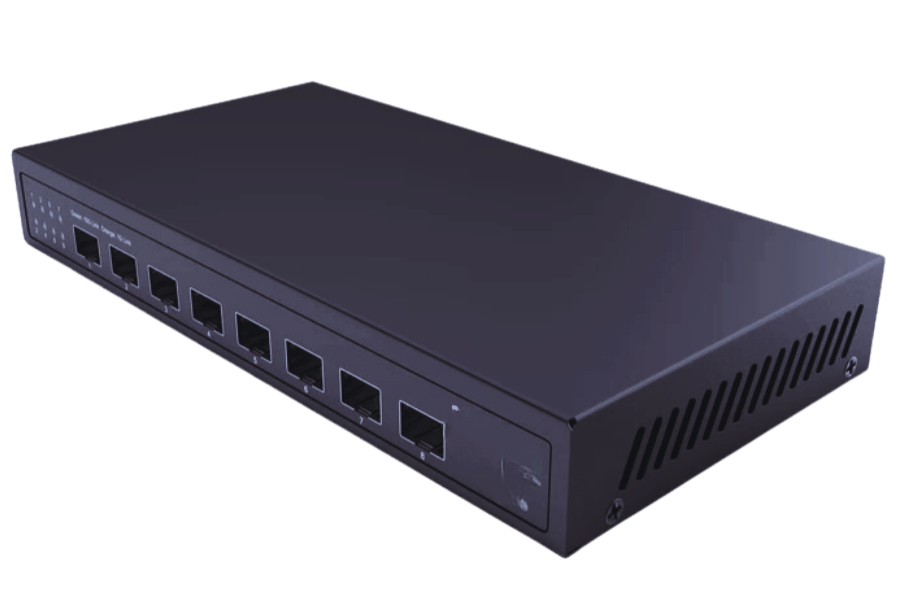
Installation Tips for Rackmount and Fanless Options
The installation of a 10 Gb Ethernet Switch must be planned in a way that it meets the required performance as well as the reliability of the system. For rackmount switches, check whether the server rack meets the acceptable size and width, which is usually 19 inches, and depth requirements to fit the switch. Use the mounting brackets that come with the device to affix the switch, taking care to fully secure it so that it will not sag under its own weight during long-term use. Careful cable management, you can use a cable organizer to avoid cable tangles while maintaining good airflow around the device. As with other electronic devices, the installation site must have a sufficiently cool temperature, because rackmount switches dissipate a lot of heat most of the time when in use, and especially during workloads.
Concerning fanless options, the location selection is critical as these switches use passive cooling. Position the fanless switch in an open area away from heat sources, ensuring that the external temperature stays below recommended limits (usually 104°F or 40°C). Maintain at least 2 2-inch distance from all sides of the device to allow unrestricted heat removal. The efficiency of passive cooling is diminished when adequate ventilation is not provided due to tight spaces or poor positioning. Also, use 10 Gb-rated cables like Cat6a or Cat7 to avoid congestion and ensure smooth data flow without speed loss.
If you follow these detailed step-by-step instructions, you will minimize network disturbance and achieve the best performance from rackmount and 10 Gb fanless Ethernet switches.
Step-by-Step Guide to VLAN and Routing Configuration
Access Switch Management
Use either the web interface or CLI to log in to the switch as an administrator.
Create VLANs
Proceed to the VLAN settings.
- Define new VLANs with distinct IDs, for example, VLAN 10 can be “Finance” and VLAN 20 can be “Engineering”.
- For easier management, set up descriptive names.
Assign Ports to VLANs
- Configure which physical switch ports are allocated to specific VLANs.
- Divide access ports to devices located within the same VLAN, and trunk ports that link to other switches that carry multiple VLANs.
Enable Routing Between VLANs
- If your switch supports routing, enable Layer 3 routing features.
- Program each VLAN’s interface IP address to allow inter-VLAN communication.
Configure Static Routes
- If required, for multiple switches in the configuration, set up static routes perimeters to control traffic within VLANs via switches/routers.
- Determine networking destination values alongside the next-hop IP address.
Verify Connections
- Verify the setup by checking attention from devices set on the same VLAN and different VLANs.
- Utilize commands like ping or traceroute to check data delivery within the network.
As long as all steps are performed correctly, network routing and segmentation efficiency is achievable with this simplified method.
Best Practices for PoE and RJ45 Connections
Use Good Quality Cables
Ensure that all RJ45 cabling is up to the required standard, usually Cat5e or above, for Power over Ethernet (PoE) to enable power and data feeding services simultaneously.
Check Connections regularly
- Inspect RJ45 connectors and ports for signs of damage or wear that could cause loss of network connectivity or obstruct power connectivity.
- Avoid Over-Utilization of Power Over Ethernet (PoE) Switches
- Verify that the total power budget of your PoE switch is not exceeded by the number of devices connected at the same time to avoid operational faults.
Ensured Adequate Cable Length
- Maintain cable runs at a maximum of 100 meters in order to provide adequate signal strength and power without loss.
- Cables should be marked and stored in an orderly manner.
- Clearly document cable labels and organize them in a manner that minimizes strain on the connectors, improves maintenance and troubleshoot efficiency while reducing potential for erroneous connections.
These measures will facilitate reliable PoE and RJ45 connections and ensure that the network infrastructure functions flawlessly.
Which Brands Offer the Best 10 Gb Switches?
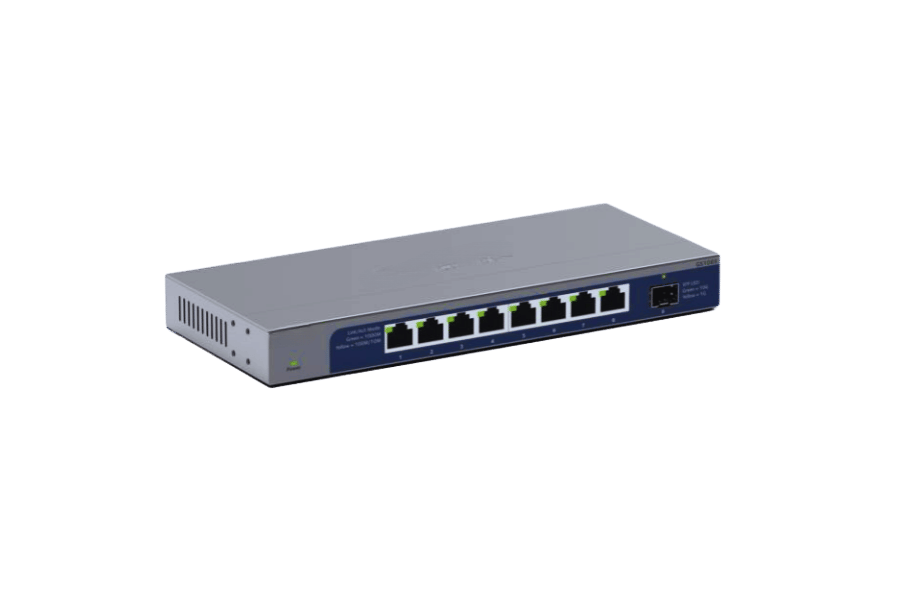
Top Picks from Netgear and TP-Link
Netgear XS708T
The Netgear XS708T is an 8-port 10-Gigabit Smart Managed switch tailor-made for small to medium-sized organizations. Its core capabilities include advanced Layer 2+ features like VLAN, QoS (Quality of Service), and link aggregation, which make it one of the best devices to establish a high-performance network. This switch also supports IGMP snooping for better performance in multicast applications. Each port provides seamless connectivity of 10 Gbps, which makes this switch ideal for video streaming, virtualization, and file sharing.
Netgear XS512EM
The XS512EM is a versatile 12-port 10-Gigabit/Multi-Gigabit switch that has the unique capability of supporting various Ethernet speeds of 1G, 2.5G, 5G, and 10 G. It is best suited to use in places where rapid network connections are needed like with Wi-Fi 6 access points, NAS(Network Attached Storage), and 10G servers. Equally, the XS512EM has a fanless design, which ensures no noise is emitted, making it perfect to use in offices. The more sophisticated management capabilities are user-friendly to novices while still granting skillful users control over their network configuration.
Top Picks from TP-Link
TP Link T1700G-28TQ
The business-class TP Link T1700G-28TQ integrates seamlessly 10G connectivity with essential Layer 2 and Layer 3 features, which include static routing and VLAN support. Equipped with VLANs, users can expand the network further with enhanced performance. Its robust yet simple management firewall interface makes traffic monitoring and optimization efficient. This 24-Port Gigabit Smart Switch also has 4 10G SFP+ uplink ports, which makes it a powerful option for businesses. The SFP+ ports also add flexibility for uplink connections that require long-distance data transmission.
TP Link TL SX105
The robust structure of the casing and plug-and-play features makes the TP Link TL SX105 a good fit for small workspaces. This model is auto-negotiable with other network devices, which makes plug-and-play configuration easy. For performance on a budget. This 5-port desktop switch was built to support small networks. With a compact design, it is ideal for small businesses as reliable network deliverance is crucial in business operations.
Upgrading to one of these models from Netgear and TP Link will enable users to work on multiple applications at the same time without building latency issues, boost responsiveness, and sustain critical stability. All 10-Gigabit switches have their special capabilities for certain needs, but these are the top-rated.
Exploring Smart Managed and Unmanaged Ethernet Switch Options
Smart managed switches provide heightened control and customization, enabling the configuration of VLANs, QoS, security policies, etc. These switches are best suitable for expanding businesses or sophisticated networks that need specific traffic control and supervision capabilities.
On the contrary, Unmanaged switches are simply plug-and-play devices without any required configuration. They are most appropriate for smaller networks and contexts where simplicity and ease of use prevail.
The differentiating factor between smart managed switches and unmanaged switches comes down to network intricacy and the degree of control needed. For optimal flexible control and scalability, a smart managed switch is best. However, with minimal network demands and simplicity being the primary focus, an unmanaged switch would be a more practical choice.
Comparative Analysis of 10 GbE Switch Models
Good performance, scalability, and a comprehensive feature set are important for evaluating different 10 GbE switch models. Some models are analyzed in the table below.
CIsco SG350XG-24T
Ports: 24 x 10GBase-T
- Key features: Advanced layer three routing, multilayered security, and lower power consumption.
- Best For: Networked enterprises of medium scale and above that sustain bandwidth-intensive tasking.
Netgear XS708T
Ports: 8 x 10GBase-T
- Key features: Smart management, QoS, and affordability.
- Best For: Scalable small to mid-sized networks with moderate growth potential.
Ubiquiti EdgeSwitch ES-16-XG
- Ports: 12 x SFP+ and 4 x 10GBase-T
- Key features: Excellent throughput, extensive support for VLANs, and ease of use.
- Best For: Corporates looking for a wide range of options within a mixed fiber copper environment.
When choosing one of them it is very important to keep in mind what network performance, management, and budgetary constraints are.
Frequently Asked Questions (FAQs)
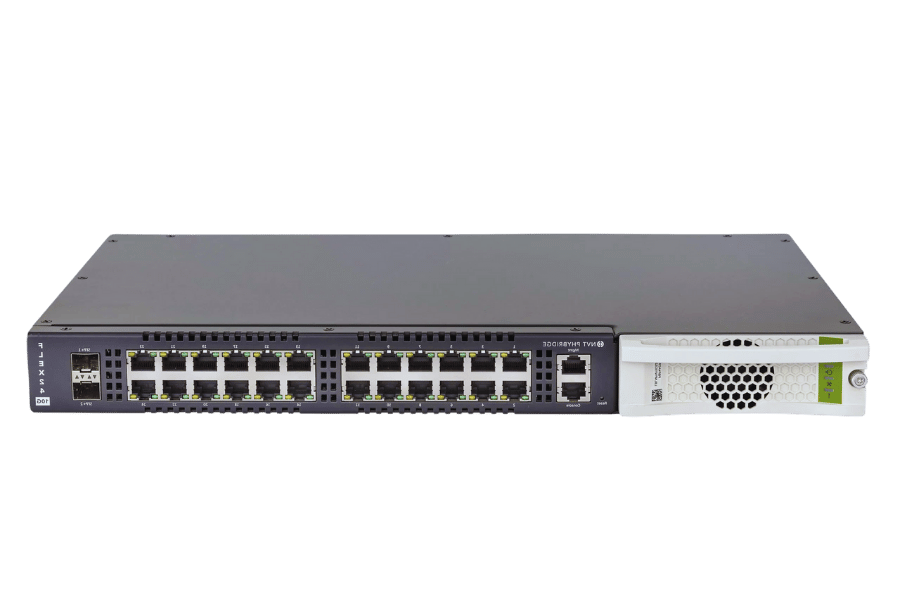
Q: What will I gain if I introduce a 10 GB switch in my network?
A: The use of a 10gb switch can provide remarkable improvements in the performance of your network by increasing the data transfer speeds and reducing lag time for file operations. This type of switch is perfect for 10gbe copper connections, big file movement, and high-level tasks including video editing and server virtualization.
Q: What is the difference between a 10-gigabit network switch and a gigabit switch?
A: The most striking difference is in the rate of data transfer. A 10-gigabit network switch will give tenfold access of data at a transfer rate of 10gbps when compared to a regular gigabit switch. This feature makes it very useful in high demand places such as data centers and enterprise networks.
Q: Is it possible to connect a 10 GB switch to my gigabit Ethernet devices?
A: Yes, commonly 10gb switches support backward connections with gigabit ethernet devices. These switches are able, through auto-negotiation, to set themselves to the working pace of the devices plugged in which makes it possible to incorporate these switches into existing networks.
Q: What is the difference between a smart switch and a fully managed switch?
A: Also referred to as a Web Managed Switch, Smart Switches have basic management features along with an easy to use interface. Fully Managed Switches offer comprehensive management features with numerous configuration options along with advanced monitoring which is appropriate for big and densely connected networks.
Q: What are SFP ports used for in a 10GB Switch?
A: SFP ports are used to connect a fiber optic or copper cable with 10 G connections at longer distances. In network design, they provide flexibility and are crucial in linking switches located at different geographical locations.
Q: In a 10 GB switch, how does auto-negotiation work?
A: In a 10 GB switch, auto-negotiation features enable hands-off configuration which improves interface speeds along with the duplexing procedures, taking into consideration the connected devices. This takes care of keeping the network performance as high as possible without manual tuning.
Q: What is the benefit of having a switch with 8 x 10 GbE RJ-45 ports?
A: The benefit enhances the number of high speed copper links to 8 so as to aid efficient processing with better throughput not only for several users sharing the switch but also with regard to the small office servers and workstations and the network as a whole.
Q: Which type of environments use 10 G multi-gigabit switches?
A: 10g multi-gigabit switches are specifically designed for ultra-high data transfer rate multi-tasking for a data center, in enterprise networks as well as in small businesses that cater to high-performance computing activities. They aid swift data processing and quick retrieval of data.
Q: Can 10gbase-t switches be used at home?
A: 10gbase-t switches can be incorporated into home setups, but are more suitable in homes that require a lot of data to be processed at the same time, for instance, media consumption or gaming. Gigabit switches are sufficient for most users unless lower time needed for packet transmission is needed.
Q: What factors should I take into account while selecting a 10 GB switch for my network?
A: In your selection of a 10gb switch, take into account the necessary port count, whether sfp or rj-45 connections are supported, preference on managed versus unmanaged switches, compatibility with current network framework, as well as unique requirements such as PoE functionality or stackable ports for later additions.
Reference Sources
1. “Hipernetch: High-Performance FPGA Network Switch” (Papaphilippou et al., 2022, p. 3:1-3:31)
Key Findings:
- Hipernetch utilizes crossbar replacement with “combined parallel round robin arbiter,” achieving stunning switching performance that nears output-queued crossbar switches through competitive switching.
- Hypernetch maintains high frequencies alongside low port-to-port latency; it also supports greater buffer memory utilization relative to older VOQ-based switches.
Methodology: The authors present the Hipernetch architecture, which replaces the crossbar design with a combined parallel round robin arbiter, enabling high frequency and low latencies. They analyze the performance of Hipernetch constructs on FPGAs, evaluating their claims that Hipernetch can sustain over 100 Gbps throughput per port on 16-port switches.
2. “A Generally Dynamic Algorithm for Optimizing Network Traffic via Intelligent Network Switch Data Flow Control” (Das et al., 2022, pp. 1–5)
Key Findings:
- Proposed is the Smart Switch Dynamic Delay Algorithm (SSDDA) which incorporates link utilization as well as goodput, packet loss, and the queuing delay of the TCP/UDP link.
- Simulations conducted in a fat tree topology with NS3 demonstrate that SSDDA enhances network throughput and reduces transmission delays relative to traditional algorithms employing queue management.
Methodology: The authors construct the SSDDA algorithm, which automatically adapts packet flow within programmable switches to link utilization and queuing delay. They implement the performance evaluation of SSDDA via NS3 simulations in a fat tree network topology.
3. “High-Performance FPGA Network Switch Architecture” (Papaphilippou et al., 2020)
Key Findings:
- This study replaces the crossbar with a more pipelined-friendly approach…the `Combined parallel round robin arbiter’ which eliminates the iterative scheduling/matching overhead found in many systems.
- The new architecture achieves very high operating frequencies with low port-to-port latencies. In addition, it is able to buffer queue memory much more efficiently than VOQ-based switches.
Methodology: The authors develop an FPGA design which implements a high-performance network switch, increasing the throughput by replacing the crossbar with a Combined parallel round-robin arbiter to decrease the attainable operation frequency while lowering latency. They test the proposed architecture to benchmark its performance.
